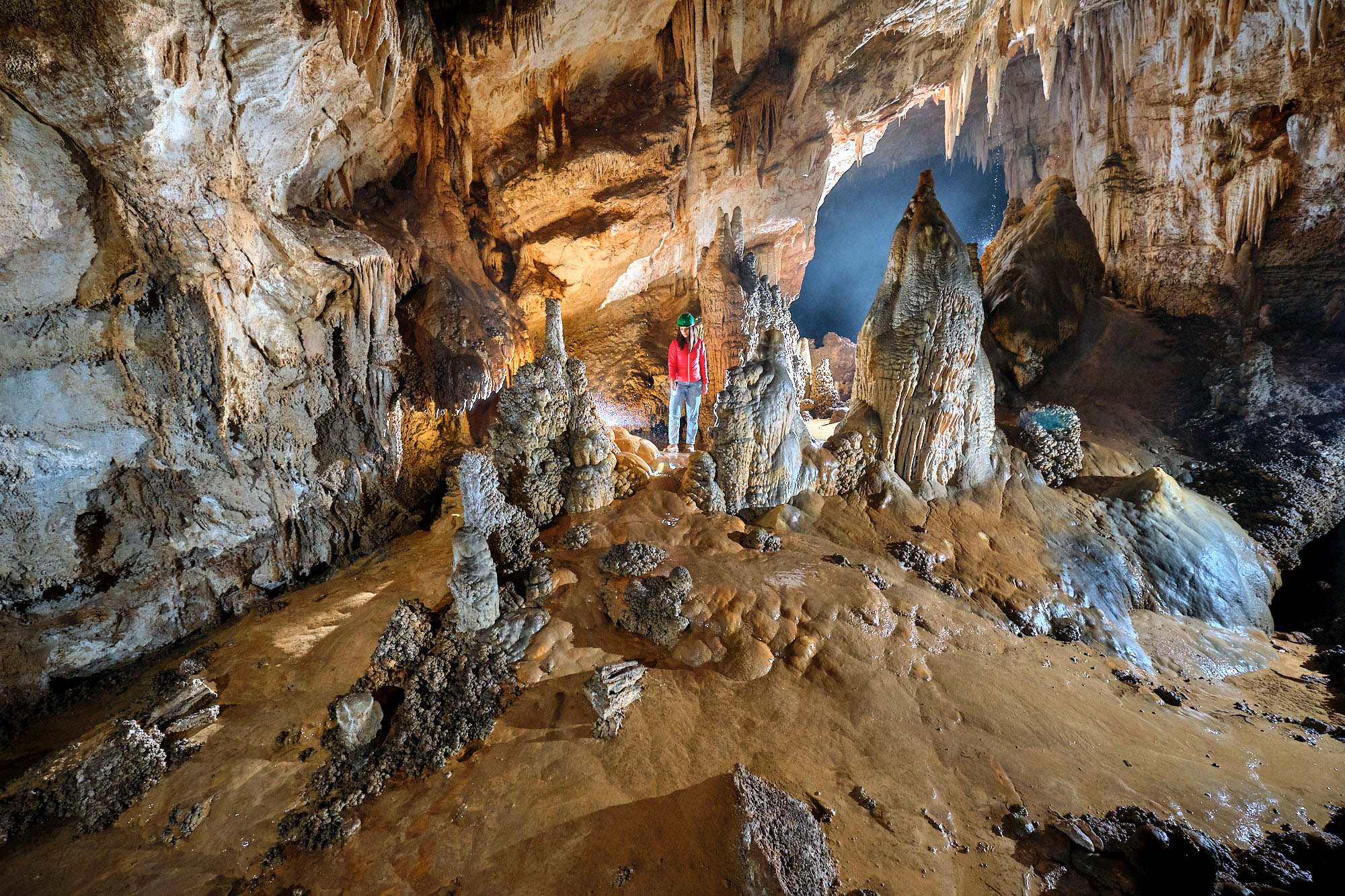Speleology is a scientific study of caves and karst features formed by natural processes, the interaction of several elements. Speleology as a term was first used in France in the late 19th century. The translation from Greek words that form the basis of the word speleology (speleation – cavity, logos – learning) would be learning about cavities.
The founder of modern speleology was Eduard Alfred Martel. He was a world pioneer in exploration, studying, and documenting caves. Martel explored thousands of caves in his native France and other countries, made cave exploration popular, introduced the concept of speleology as a separate field of scientific study, maintained an extensive archive, and founded the Société de Spéléologie, the first organization devoted to cave science. Martel, known as ‘the father of modern speleology’, visited Lipa cave 1894 as part of his research.
Within this interesting topic concerning caves and pits, we must get acquainted with their origin and development, and as a result, new questions arise. How do we distinguish caves from pits? How are cave ornaments formed? What types of flora and fauna can be found in the rich underground? What is the temperature in the depths of the earth? Topics of discussion are plentiful. The question of can the underground world be interesting to those outside the field of speleology also arises. Lipa cave’s doors are open to visitors, whether they visit us out of sheer curiosity or simply wish to enrich their speleological experience.
Speleology is a cross-disciplinary field and it includes: geology, geomorphology, hydrology, biology, archeology, history, etc. All of them merge in this hidden world to form a very interesting whole. Our journey through the magical world of the underground began in 2013, and it’s been enriched by new knowledge, constant surprises, and intriguing discoveries and, above all, hidden beauty. Our journey through previously asked questions has just begun.
• How do we distinguish caves from pits?
In world literature, a cave denotes any speleological phenomenon. In our country, this term is mostly used if the average slope of the channel is, according to some definitions, less than 45°. A more accurate definition would be that a cave is a speleological phenomenon whose geomorphological properties condition a horizontal extension of the channel. A pit is a speleological phenomenon with a vertical channel extension (according to some definitions, the average slope of the channel is greater than 45°). However, some caves have vertical entrances and are often defined as pits, regardless of the overall average channel extension.
• How are cave ornaments formed?
Cave ornaments are formed by the action of water. They form in two ways, by dripping (stalactites, stalagmites, pillars) and flowing (slopes, curtains, rim-stone dams)
• What kind of flora and fauna can be found in the rich underground?
Depending on the amount of time they spend in caves, there are three categories of cave organisms. Trogloxenes: from the Greek words “troglos” (cave) and “xenos” (guest). They are temporary cave residents which freely move in and out of the cave. These cave visitors seek out such a habitat from choice, and never complete their entire life cycle in the cave. Many of these animals are not dependent on the cave for their survival, they show no special adaptations to the cave environment. Troglophiles: from the Greek words “troglos” (cave) and “phileo” (love). These cave loving animals can live in the dark zones of a cave, or they can also survive outside the cave. At times they will venture out in search of food. The most representative representatives of troglophiles are bats. Some bat species prefer constant temperature for hibernation and raising their young. This group of organisms includes certain insects, toads, salamanders, and some crab species. Troglobites: from the Greek words “troglos” (cave) and “bios” (life). They are the true cave dwellers which spend their entire lives in the cave. Living permanently in the dark zone, these species are found only in caves and cannot survive outside the caves. Namely, sensory organs that are not necessary have degenerated. Most troglobites are white to pinkish in color. They lack pigment because they have no need for protection from the sun’s rays. Many have no eyes or their sight is poorly developed. What the troglobites have lost they make up for with longer legs and antennae, or feelers, and with adaptations that enable them to go for long periods of time with little food. Animals that have completely adapted to cave life include: cave fish, cave shrimp, isopods, amphipods, millipedes, some cave vertebrates and insects.
• What is the temperature in the depths of the earth?
The temperature of caves is usually close to the average annual temperature in the region of their location. The temperature in Lipa cave is constant, between 8 and 12 degrees.
Finally, the question remains whether the underground world can be interesting to those outside the field of speleology? We will get back to you with answers on another occasion, and until then we invite you to stay with us to discover our hidden magical world together, baffled by questions and amazed by the answers.


